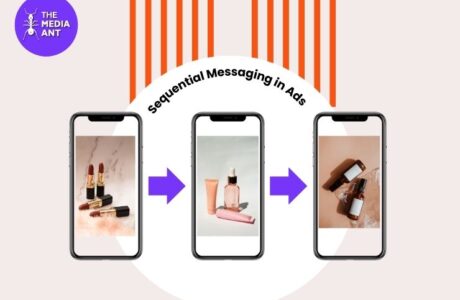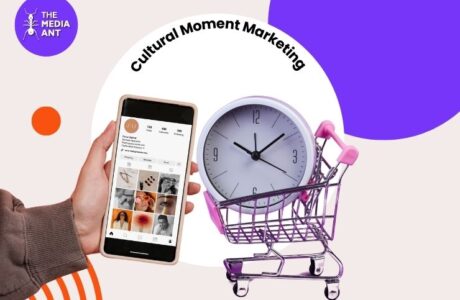What is a Media Mix?
A media mix refers to the combination of different advertising channels that a brand uses to communicate its message to its target audience. This strategic blend of media ensures that brands reach their target audience through various touchpoints, each serving a unique purpose in the overall campaign. By utilizing a diverse mix, brands can maximize their reach, increase engagement, and improve their ROI. A solid media mix can include traditional media, such as television and print, as well as digital platforms like social media, search, and display ads. For example, Nike’s “Just Do It” campaign blended television commercials, social media marketing, and influencer collaborations to amplify its message across both mass and targeted audiences.
Key Components of a Media Mix
1. Television Advertising
Television remains a dominant force in many media mixes due to its ability to convey both emotional and informational messages to a broad audience. Cadbury effectively uses television ads to promote seasonal campaigns, such as the iconic Cadbury Dairy Milk ad during Diwali in India. By associating their product with festive moments, they have been able to connect with millions of viewers, strengthening brand loyalty and awareness.
2. Print Media (Newspapers and Magazines)
Print media, including newspapers and magazines, still holds significant value in the media mix, especially when targeting specific regional or demographic groups. For example, Myntra, an online fashion retailer, uses print advertisements in fashion magazines like Vogue India to target affluent readers. This print strategy is effective for providing in-depth product descriptions and positioning Myntra as a premium brand in the fashion industry.
3. Radio Advertising
Radio advertising remains a powerful tool for reaching consumers during their daily routines, especially while commuting or at work. Pepsico utilizes radio ads extensively in India, particularly during major events like the IPL (Indian Premier League) cricket tournament. By airing targeted radio ads on popular channels, Pepsico increases its visibility and keeps its products top-of-mind for listeners during peak cricket season.
4. Digital Advertising (Search, Social, Display)
Digital advertising has become a crucial component in the modern media mix, allowing brands to reach specific audiences through platforms like Google Ads, Facebook, Instagram, and Twitter. Swiggy, the Indian food delivery giant, uses digital ads on social media and Google search to capture the attention of food enthusiasts and drive app downloads. Their personalized, highly-targeted campaigns ensure they remain relevant to users when they search for food delivery options.
5. Outdoor and Transit Advertising (OOH)
Outdoor and transit advertising, including billboards, buses, and trains, plays a key role in maximizing brand visibility in high-traffic areas. For instance, Amazon India uses large-scale OOH ads in major cities like Delhi and Mumbai to promote its annual sales events, such as Amazon Great Indian Festival. These ads ensure that Amazon stays visible and relevant during peak shopping seasons, creating widespread awareness for the brand and driving site traffic.
6. BTL and Experiential Marketing
Below-the-line (BTL) marketing and experiential campaigns involve direct interaction with consumers, offering a more personal and engaging experience. For instance, Red Bull is famous for its experiential marketing, such as sponsoring extreme sports events like Red Bull Stratos. These events help the brand connect with its audience emotionally, promoting its core brand values of energy, adventure, and performance while creating lasting consumer experiences.
Why is a Media Mix Important?
A strategic media mix is vital for brands to effectively reach and engage with their target audience. By using multiple platforms, brands can ensure their message is visible across different touchpoints, thereby increasing the chances of conversions. For example, L’Oréal combines TV, print, and digital ads to target different consumer segments, ensuring broad awareness through television and detailed engagement via digital platforms. This diverse approach maximizes the brand’s overall impact and engagement with potential customers.
How to Choose the Right Media Mix (2025 Strategy)
Choosing the right media mix for 2025 requires a strategic approach based on audience behavior, campaign objectives, and budget considerations. Here’s how brands can develop an effective media mix:
- Understand Your Audience: Identify the platforms where your target audience spends their time. For example, if your audience is millennials, platforms like Instagram and Snapchat may be more effective, while Boomers may still be reachable through TV and print media.
- Align Your Strategy with Campaign Goals: Choose the right media channels based on your campaign objectives. For brand awareness, TV and OOH ads work well; for conversions, digital ads and Google search are more effective.
- Allocate Budget Appropriately: Ensure that the budget is divided effectively across platforms based on their importance to the campaign. For instance, allocate a larger share of the budget for digital ads if you’re targeting a younger audience, but also ensure you maintain a presence on TV for mass reach.
- Analyze and Optimize: Use data to track performance and adjust your media mix accordingly. Google Analytics and Meta Ads Manager can help you identify which platforms are driving the best results.
Media Mix Examples (With Real-World Scenarios)
1. FMCG Brand Example
A well-known FMCG brand like Hindustan Unilever typically uses a media mix of TV, print, and digital ads to target various segments of the market. For example, Lifebuoy soap uses TV for mass awareness, print for regional outreach, and Facebook ads for targeted promotions aimed at specific age groups or demographics.
2. D2C Brand Strategy
A D2C brand like Nykaa employs a primarily digital-first strategy, using platforms like Instagram, YouTube, and Google Ads to reach its audience. By utilizing influencer marketing, Nykaa generates significant engagement through Instagram stories and YouTube reviews, ensuring high visibility among beauty enthusiasts.
3. B2B Campaign Approach
A B2B brand like Tata Consultancy Services (TCS) uses a media mix of LinkedIn, Google Ads, webinars, and email marketing to target decision-makers in other businesses. This approach allows TCS to provide in-depth information, engage with professionals, and nurture leads over time, ensuring a steady stream of qualified inquiries.
4. Regional Advertising Mix in India
For regional advertising, Dabur uses a mix of local TV channels, regional print media, and localized social media ads to reach consumers in different states. For example, their Amla hair oil is advertised in Tamil and Telugu in South India, while their Honey products are marketed in Hindi and Marathi in Northern and Western India, ensuring cultural relevance.
A Quick Guide to Media Mix Modeling (MMM)
1. What is Media Mix Modeling?
Media Mix Modeling (MMM) is a statistical technique used by brands to assess how different advertising channels contribute to sales and other business outcomes. It allows marketers to analyze past data to optimize future media spend, providing a clear understanding of which channels are driving the best ROI.
2. How MMM Helps Optimize Media Spend
MMM helps brands make data-driven decisions on where to allocate their advertising budgets. For example, it may reveal that digital ads are more cost-effective than TV ads for driving conversions in a certain region, prompting brands to shift more budget to digital channels to maximize impact.
3. MMM vs Digital Attribution: What’s the Difference?
While MMM measures the overall impact of various media channels, digital attribution focuses on the role each individual touchpoint plays in the customer journey. For instance, MMM might reveal that TV is a high-impact channel for brand awareness, while digital attribution could show that search ads contribute most directly to conversions.
Common Media Mix Planning Mistakes to Avoid
- Over-relying on One Channel: Limiting your media mix to one platform can drastically reduce your reach. Diversifying across different channels ensures a broader reach and minimizes risk.
- Ignoring Data Analytics: Not using data to track campaign performance leads to ineffective spend. Always use tools like Google Analytics to measure and optimize your campaigns.
- Neglecting Regional Nuances: In a diverse market like India, cultural and regional differences are crucial. Always localize your content to cater to regional preferences, language, and behaviors.
FAQs
How is media mix different from marketing mix?
The media mix focuses specifically on the communication channels used to reach consumers, while the marketing mix encompasses the broader strategy, including product, price, place, and promotion.
What media mix works best for small businesses?
For small businesses, a cost-effective media mix might include local print ads, social media ads, and Google Ads to drive awareness and direct conversions.
How do I measure the effectiveness of a media mix?
Use platforms like Google Analytics, Meta Ads Manager, and Media Mix Modeling (MMM) to measure key metrics such as reach, engagement, and ROI, and adjust your strategy accordingly.
Can AI tools help with media mix planning?
Yes, AI tools can analyze large datasets to help identify the most effective channels and recommend how to allocate your budget for the best results.
What is a list of media mix?
A typical media mix includes TV, print, radio, digital advertising (social media, search, display), OOH, and experiential marketing.
What is a mixed media product?
A mixed media product combines multiple types of content, such as video, text, and images, to deliver a richer, more engaging marketing message.
What are the components of the media mix?
The components of the media mix include TV, print, radio, digital advertising, OOH, and experiential marketing.
What is an example of MMM?
An example of MMM is Procter & Gamble using media mix modeling to evaluate the effectiveness of different media channels and optimize their ad spend for the best ROI.





